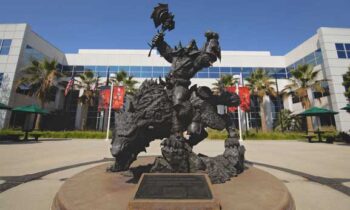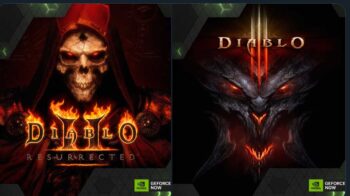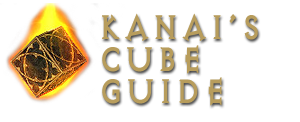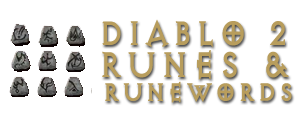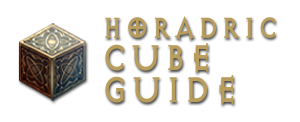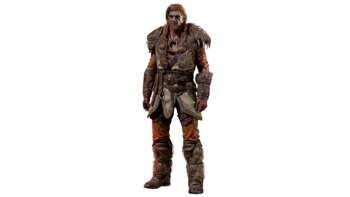 Druid Background
Druid Background
The Druids who inhabit the northern forests of Scosglen developed their magic independently from the eastern mage clans. They served as the warrior-kings of their tribes, usually living apart from their people in massive stone towers that were covered with vines and ivy. As masters of the natural world, they were able to control living creatures and the very forces of nature.
Skills and Abilities
Perhaps the most notable power of these Druids is their ability to change their form into that of an animal. Because of this ability, the tribes under their rule knew that they could be watched at any time. The sight of what was thought to be a common beast transforming into a vengeful Druid kept many a potential uprising in check.
The Druid controls both Elemental and Prime magic. His Elemental powers give him control over fire, earth and the winds. His Primal bond with nature allows him to command many beasts and plants, summoning ravens, wolves, vines, and even natural spirits to do his bidding. He can also change his own shape into creatures such as a huge cave bear, or a dire wolf, and then use these forms to call upon further powers.
As with the Assassin we see Sorceress elements here with his Elemental attacks but also some Necromancer-like tendencies in his ability to raise and command pets. He also has more combat skills than either the Necromancer or Sorceress, with his various shape-shifting abilities, which allow him to become much more powerful in combat for the duration of the transformation.
The Druid is not as passive a “stand around” sort of character as the Necromancer. His minions aren’t as powerful or numerous as the Necromancers’, but he has a number of very powerful elemental attacks, better than the Necromancer’s attack skills, and with the shape shifting he can get into the battle personally and do substantial damage.
He differs from the Necromancer in that he doesn’t need corpses to raise his summonables but they consume them and on a rather large scale in fact. Carrion Vine for example, which eats corpses to give life back to the Druid, can go through a field of dead and clear what’s left. Fabulously handy for the Druid but if he’s playing with a Necromancer he won’t be none too happy and it’ll be handbags at dawn.
Statistics and Figures
| Attribute | Starts | Per additional point | Each Level Up |
|---|---|---|---|
| Strength | 15 | – | – |
| Dexterity | 20 | – | – |
| Vitality | 25 | + 2 to Life, + 1 to Stamina | – |
| Energy | 20 | + 2 to Mana | – |
| Stamina | 84 | – | +1 |
| Life | 55 | – | +1.5 |
| Mana | 20 | – | +2 |
As Diablo 2 rounds down figures displayed you will see a discrepancy at times. With the example above with life increasing by .75 with each level up, even though you won’t see a figure change to x.5 and x.25 the Druid will be benefiting from the fraction of life increase and LoD will round the figured down for display purposes only.
You can see he picks up a decent amount of mana per point in energy, but he needs to feed all of the attributes, more so than any of the other characters. A Druid could play all magical, using only the Summoning and Elemental trees, and he’d be much like a Necromancer with more powerful skills {but less powerful minions} that way. He would need more mana to play this style.
Or he could go a more active route, and put points into the Shape-shifting tree, as well as some in Summoning, and after Summoning some of them up, join his minions in battle. To succeed at this technique he would need more points in strength to wear better armour for protection in battle, and would also need more hit points and dexterity, to be able to hit the enemy successfully.
A Druid who used skills from all three trees would have problems doing them all well, needing points in all attributes to wear armour, do damage, hit successfully, and still have enough mana to use some Elemental skills and keep summoning creatures and transforming. He seems to have a lot of options in play style, but also seems that he would need to be handled well, to keep from being spread too thin.
Elemental
The Druid’s Elemental Skills are mostly spells, much like the Sorceress’, in some cases. They are generally less powerful, and he has less mana {and has nothing like Warmth to get it back more quickly} so he has to be more sparring with his spell-casting, much like a Necromancer. There are two distinct types of elemental damage Fire on the left side and the newly introduced Wind on the right. Even though this tree is called ‘Elemental’ the wind skills actually inflict physical damage.
One of the two level 30 skills requires a point in every single skill on the tree, Armageddon. It is the only skill across all seven characters that has that requirement.
He can not let rip with a rapid fire onslaught of elemental damage as there is a short delay between casting for some of them, where the skill button reddens and it is unusable. This is because some skills are so graphically elaborate that having multiple instances of them on the screen simultaneously can seriously slow the game down, so this delay was introduced for skills falling under that banner. To compensate for the slight delay {only a few seconds at most} their damage was increased so it balances out.
Shape Shifting
Only the Druid has the ability. He has two types of creatures to shift into, and in each form there are related skills that can only be used when in that form. These boost his attacking abilities while in the animal form, are appropriate to the type of animal.
The properties of the equipped items at the time of shifting are transferred to his new form. So if he had a cold-enhanced bow for example and shifted into a grizzly form the damage and cold damage would be transferred to his attack with his paws.
Elemental skills can not be used while shifted into either form but they can be used immediately prior to shape shifting. So you could activate a Fissure and Tornado then quickly shift into another form. But you are able to use Summon skills to boost AR and Hit Points for example, however if you have transformed yourself into a wolf you can only summon wolves and the same with shifting to a Bear.
If when shifted you wish to change into another form or back to human form before the duration of the skill is up you simply recast the skill.
Another cool aspect of the shape-shifting is that it won’t wear off when you enter town. You’ll be able to come and go from town in animal form, if you wish.
Summoning
This is where the Druid most resembles the Necromancer, though his minions are rather different than skeletons, golems, or revived monsters. The Druid’s pets are less monster-like, as they are wild animals, called forth from nature, rather than dredged up from a monster corpse.
In order to distinguish the Druid’s summoning capabilities from the Necromancer’s abilities they execute, to a large degree, in a different fashion. None of the Druid’s, for example, require a corpse; they are all called forth at the cost of mana only.
One important fact to note looking over the Druid’s summoning skills is that only one of each type can be present at one time, one vine, one spirit and one summoned animal (except ravens, they can always been present regardless of what else the Druid has summoned).
And the biggest difference is that the Druid has massive attack skills, but also he can Shape Shift and join his pets in the fray if he wishes. He also has an Unsummon skill identical to the Necromancer’s, with which he can dispel any of his pets instantly, if they are blocking his way or going where he doesn’t want them to go.
To encourage a Druid to not abandon the lower level summoning skills, passive bonuses are afforded with more points as well as the usual property increments. So for example having one point in Summon Dire Wolf will give a passive bonus to both summoned wolves and bears of +50% health. And a single point in Summon Grizzly will increase the damage dealt by both wolf and bear by 25%.
History
The Druids are a race of nomadic warrior-poet-kings. Driven from their homelands long ago by their Barbarian brothers, the Druid tribes live primarily in the northern forests. Using mystic secrets passed down through the generations, they summon the elements of fire and wind to do their bidding, and command the creatures of the forest to aid them in battle. Shifting from their human forms into that of wild beasts, gives them abilities far beyond those of other mortals.
In the ancient tome of the Druids, the Scéal Fada (“Long Story”), it is written that Bul-Kathos, the great and ancient king of the Barbarian tribes, had a mysterious but trusted confidant, who was only referred to as Fiacla-Géar (“Sharp-Tooth”). This man is sometimes described as Bul-Kathos’s close friend, and at other times, he is referred to as his brother. Whatever the source of their relationship, their bond was strong, and together they shared the secrets of the ancients: of the mysteries below the peaks of Mt. Arreat, of the venerated task put to their people to protect those mysteries, and of the prophecies regarding the dark times ahead. They both agreed that, in order to fulfill their sacred trust, their people must devote themselves to nothing save that charge. However, they disagreed on exactly how the people could best do this. Bul-Kathos believed that only by bringing the tribes together and training them in strict martial discipline could the tribes faithfully concentrate on their goal for generations to come.
Fiacla-Géar, on the other hand, believed that only through obtaining a spiritual oneness with the land they had sworn to protect could the people truly appreciate the importance of their role. Both agreed the other’s philosophy had merit, and so around the time Bul-Kathos united the tribes, Fiacla-Géar gathered together a small group consisting of the tribes’ greatest warrior-poets and shamans and mysteriously retreated into the forests surrounding the area known as Scosglen. There he and his people created the first of the Druid Colleges, huge mortar-less stone towers, covered in vines and safely hidden beneath the leafy canopies of the dense forests. They have dwelt there ever since, forging a new way of life for themselves. They created a new culture and language, cutting themselves off from their Barbarian cousins and their ways, vowing not to return to the Steppes of Mt. Arreat until the time of the Uileloscadh Mór, (“Great Holocaust”) between the men of the world and the demons of the Burning Hells.
Here, in preparation for the impending conflict, he taught his people the Caoi Dúlra (“Way of Nature”), a harmony with the natural elements of the world, its plants and animals, as the heart of its most intrinsic beliefs, for they are the personification of the very world that the Druids have sworn to protect. Not only was Caoi Dúlra the basis for their system of values, but through its study and practice, the Druids learned to bond with the natural entities of Sanctuary. This bonding was so absolute that eventually they discovered how to talk to the plants and animals, and these beings taught them all the secrets of the natural world. They taught them methods to call animals from far away, how to summon sentient plants from the earth, ways to change their own forms to share the strengths of their animal cousins, even, to a limited extent, techniques to control the weather.
At the Túr Dúlra (“Tower of Nature”), the greatest of the Druid Colleges, stands a great tree Glór-an-Fháidha (“Glory of the Oak”). This tree is the most revered source of the Druids guidance and teachings. Under its branches, for centuries, the Druids of Scosglen have been honing not only their powerful arsenal of natural magic, but also the martial skills they have retained from their Barbarian forefathers. They have done this because they believe themselves to be the world’s last line of defense when the time of the great conflict comes, a time they believe is at hand. Lashing out in fury at the recent insurgence of denizens of the Burning Hells, and at the Leathdhiabhala (“Half-Demons”), demonic corruptions of the very creatures they have vowed to defend, the Druids have, at last, emerged from their forests, marching toward their final stand against the minions of Chaos.
Traits and Abilities
The Druids shun the use of traditional magic, which they call “Dubhdroiacht” or “Black-Magic”. They instead practice a form of magic based in their close bond to nature. Through this intimate kinship with the world of Sanctuary, a Druid has the power to command fire, earth, and the winds. He is a friend to the animals of the wilds and can call upon them to aid in his struggle. He can also use his heightened rapport with the animals to change the shape of his own body, drawing on the strengths and abilities of his woodland companions to better serve their cause.


